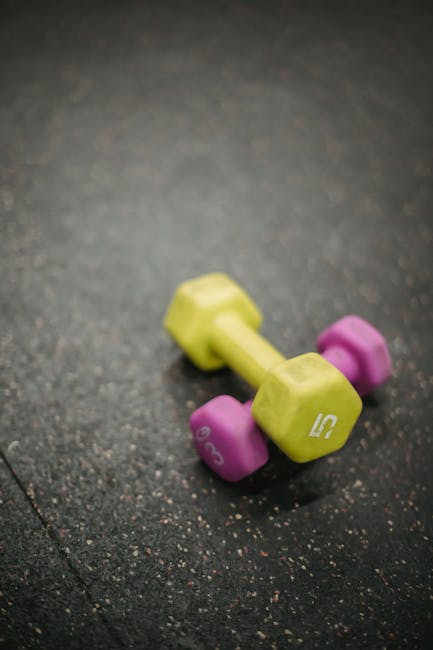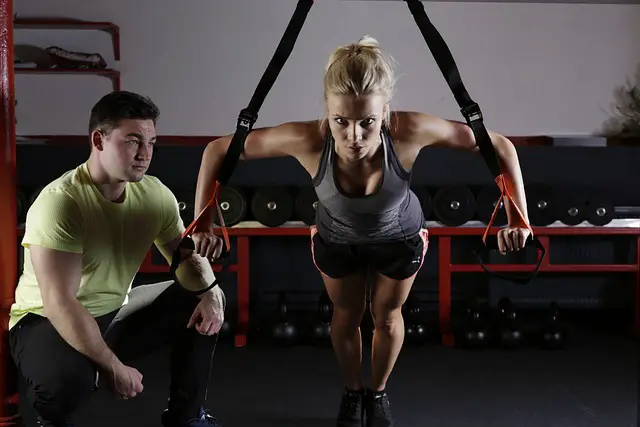Welcome to the world of weight lifting, where pumping iron is a way of life and elbow tendonitis is just one of the many badges of honor. Yes, we know you’re proud of those bulging biceps and six-pack abs, but let’s be real, those flaring elbows aren’t quite as impressive. In our quest to become swole and sculpted, we’ve all experienced our fair share of aches and pains, including the dreaded “tennis elbow” or “golfer’s elbow”. But fear not, fellow weight lifters, for in this article, we’ll delve into the nitty-gritty of elbow tendonitis and how to prevent it from cramping your lifting style. Grab a protein shake and let’s get started!
Contents
- 1 1. An Introduction to Weight Lifting and Elbow Tendonitis
- 2 2. Understanding the Anatomy and Mechanics of Elbow Tendonitis
- 3 3. Excessive Weight Lifting and Its Link to Elbow Tendonitis
- 4 4. Improper Technique and Elbow Tendonitis: What You Need to Know
- 5 5. Prevention and Management of Elbow Tendonitis in Weight Lifting
- 6 In Conclusion: Bye-Bye Tendonitis!
1. An Introduction to Weight Lifting and Elbow Tendonitis
Weight lifting is an excellent way to get fit and bulk up. However, anyone who has ever lifted weights knows that it can come with some serious drawbacks. One of the most common (and annoying) injuries that weight lifters face is elbow tendonitis. Trust me, it’s the last thing you want to experience when you’re trying to hit the gym and boost that muscle mass.
Elbow tendonitis is a painful condition where the tendon in your elbow becomes inflamed, leading to pain and swelling. This inflammation is often caused by overuse or repetitive motion, like lifting weights. Suddenly, lifting a plastic bottle of water feels heavy, and you feel like your elbow could snap in half if you so much as look at a weight. It’s the mother of all annoyances, but don’t worry, there are ways to manage and prevent it from happening.
So, what can you do to prevent elbow tendonitis? For starters, make sure you’re lifting weights with proper form. Focus on good technique instead of trying to lift the heaviest weight possible. Warm up before exercising, stretch your arms, and use proper equipment that supports your arms and wrists. If you feel any discomfort, take a break or switch up your routine. Remember, no pain, no gain doesn’t exactly apply when it comes to muscles that feel like they’re on fire.
2. Understanding the Anatomy and Mechanics of Elbow Tendonitis
So, you’ve got elbow tendonitis. That’s not great news, but don’t worry – understanding the anatomy and mechanics of elbow tendonitis is the first step to conquering it. Let’s jump right in!
Anatomy: Your elbow is made up of three bones – the humerus, radius, and ulna – which are all connected by tendons and muscles. Tendons are strong, fibrous cords that attach your muscles to your bones. When these tendons get inflamed, you’ve got tendonitis. And when it happens in your elbow, that’s elbow tendonitis. See, it’s not so complicated after all!
Mechanics: If you’re like most people, you probably got elbow tendonitis from repetitive motions – such as playing tennis, typing, or brushing your teeth (just kidding, but you get the idea). Over time, these repetitive motions can cause small tears in the tendons that connect your forearm muscles to your elbow. And voila! – you’ve got tendonitis. The good news is that, with rest and proper treatment, these tears can heal and your tendons can return to their normal, healthy state.
Prevention: Now that you know the anatomy and mechanics of elbow tendonitis, it’s time to prevent it from happening again. Here are a few tips: Take regular breaks from repetitive activities, stretch before exercising, use proper form during sports or activities, and strengthen your forearm muscles. And if you do feel pain in your elbow, take a break and give your tendons a chance to rest and heal. After all, you want to keep those tendons in tip-top shape so you can get back to doing all the things you love – like playing tennis, typing, and yes, even brushing your teeth.
3. Excessive Weight Lifting and Its Link to Elbow Tendonitis
If your biceps look like they’ve been chiseled out of marble, you’ve probably spent countless hours pumping iron at the gym. But, did you know that those heavy weights could be causing elbow tendonitis? That’s right, excessive weight lifting can lead to inflammation and pain in your elbows.
Now, before you start panicking and swearing off weightlifting for life, it’s important to know that not all weightlifting is bad. In fact, lifting weights can help strengthen the muscles around your elbow and prevent tendonitis from occurring. The key here is to find a happy medium and not go overboard with the weights.
So, what can you do to prevent elbow tendonitis from weight lifting? Here are a few tips:
- Start with lighter weights and gradually increase the load
- Don’t lift weights above your range of comfortable motion
- Take breaks and stretch your arms in between sets
- Use proper form and technique to avoid unnecessary strain on your elbows
Remember, weightlifting can be a great way to build strength and improve your overall health. Just be sure to listen to your body and don’t push yourself too hard. And if you do start to feel pain in your elbows, it’s important to seek medical attention and give your body a chance to rest and heal.
4. Improper Technique and Elbow Tendonitis: What You Need to Know
So, you’re experiencing elbow tendonitis. You’re out of the game, injured, and feeling pretty miserable. But don’t worry, dear reader, because we’ve got you covered. We’re going to tackle one of the primary causes of elbow tendonitis: improper technique.
Firstly, let’s talk about the importance of proper form. If you’re hitting the gym or playing sports, it’s crucial to make sure you’re executing movements correctly, or else you’ll end up with a whole host of joint problems. And let’s be real, nobody wants a chronic injury like the ‘tendy.’ So, get yourself a trainer, watch some YouTube videos, and practice until you’re doing it correctly.
Secondly, if you’re experiencing elbow pain, there are a few things you can do to alleviate the issue. Firstly, rest is key, and inflammation can be reduced with some good ol’ ice. But also, it’s worth trying some targeted exercises to build strength in the muscles surrounding your elbow. Some examples include wrist curls and reverse wrist curls (for your forearm muscles) and chin-ups and rows (to work on those biceps and triceps).
5. Prevention and Management of Elbow Tendonitis in Weight Lifting
Prevention and Management of Elbow Tendonitis in Weight Lifting
If you're a weight lifter, chances are you've experienced that dreaded pain in your elbow known as tendonitis. But fear not, my fellow gym rats! There are some preventative measures and management tactics you can take to avoid and alleviate this uncomfortable condition.
- Warm-Up: Before diving into your heavy lifts, make sure to warm up properly. A quick 10-minute cardio session or some light stretching can do wonders for your muscles and joints, preventing potential injuries like tendonitis.
- Proper Technique: It's not just about lifting heavy weights, it's also about doing it with proper technique. Make sure to consult with a trainer to learn the correct form for each exercise, as improper technique can put unnecessary pressure on your joints and lead to injury.
- Rest: It's important to give your muscles and joints a break between workouts. Overtraining can lead to strain on your tendons, leading to tendonitis. Take breaks between heavy lifting sessions to let your body rest and recover.
Now, let's say you've already come down with a case of the dreaded tendonitis. What can you do to manage the pain and help your elbow heal?
- Ice and Heat: Applying ice to your elbow can reduce swelling and ease pain, while heat can increase blood flow to the area, promoting healing. Alternate between 10-15 minutes of ice and heat therapy for best results.
- Anti-Inflammatory Medication: Over-the-counter painkillers such as ibuprofen can help relieve pain and reduce inflammation. Consult with your doctor before taking any medication.
- Rest and Recovery: Give your elbow time to rest and avoid any activities that may aggravate the condition. Gentle stretching and light exercise can help promote healing.
Remember, prevention is key when it comes to elbow tendonitis. Take proper precautions and listen to your body to avoid potential injury. And if you do end up with tendonitis, don't worry – it's a common condition among weight lifters, and with proper care and management, you'll be back to lifting heavy in no time.
In Conclusion: Bye-Bye Tendonitis!
Now that you know the ins and outs of weight lifting and elbow tendonitis, you can ensure you’re taking the necessary precautions to avoid it. But if you’re like me and you can’t resist the sweet, sweet burn of a good workout, just remember to stretch, warm-up, and take a break if needed. Otherwise, you might find yourself saying “bye-bye” to your weight lifting goals and “hello” to some serious elbow pain. And who really wants that?
Until next time, happy lifting and pain-free workouts!








Leave A Comment